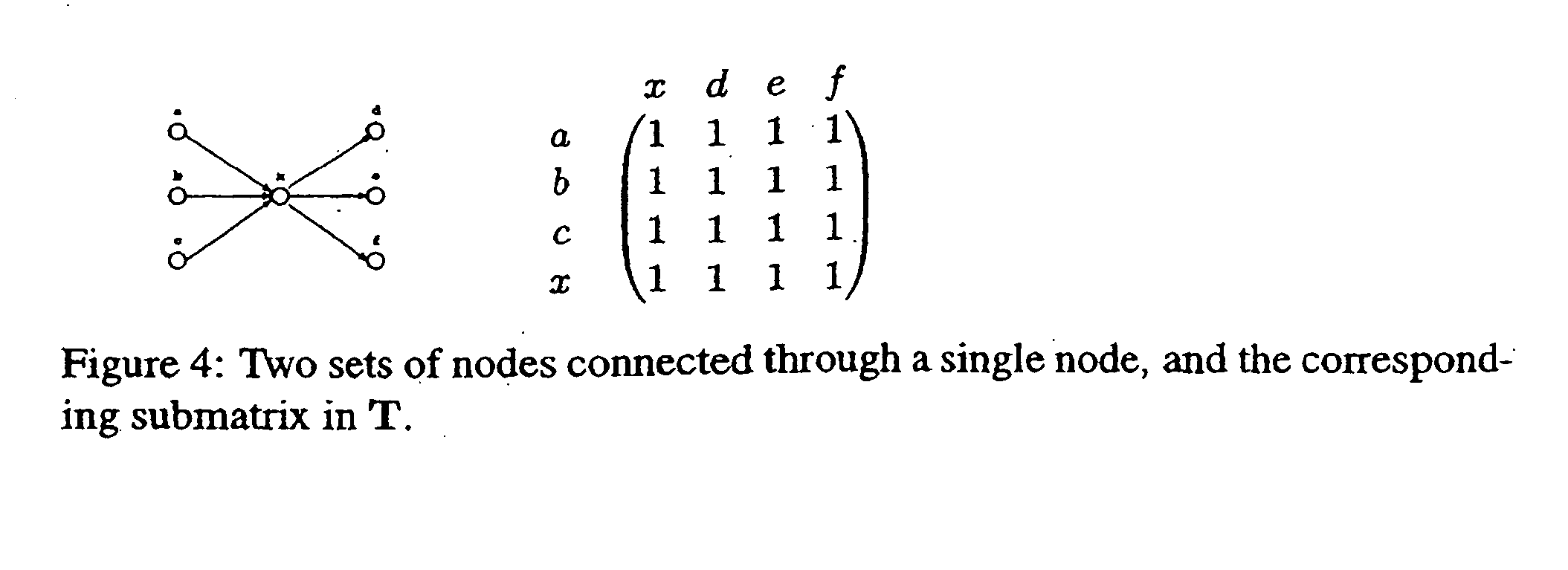Systems and methods for fast reachability queries in large graphs
a graph and reachability technology, applied in the field of graph reachability testing between nodes, can solve the problems of applicability falling prey to graphs with substructures they are not designed to handle, and achieve the effect of encoding more efficiently and encouraging larger submatrices
- Summary
- Abstract
- Description
- Claims
- Application Information
AI Technical Summary
Benefits of technology
Problems solved by technology
Method used
Image
Examples
Embodiment Construction
[0027] To further the present discussion, one may recast the problem of graph reachability labeling as a problem of finding a compact representation for a transitive closure matrix. From this viewpoint, and for the purposes of providing a basis of comparison, two highly popular conventional approaches are discussed herebelow—namely, interval-based and 2-hop—followed by a brief discussion of other related work.
[0028] In an interval-based approach, nodes are labeled by intervals, whose containment relationships encode ancestor-descendant relationships among nodes in a tree. In the transitive closure matrix, each directed path in the graph corresponds to a reordered submatrix with ones in the upper triangle and zeros in the lower triangle (see FIG. 2). This submatrix can be encoded succinctly by labeling the nodes involved with nested intervals. Thus, the interval-based approach is effective in compressing those transitive closure matrices that contain many such upper triangular subma...
PUM
 Login to View More
Login to View More Abstract
Description
Claims
Application Information
 Login to View More
Login to View More - R&D
- Intellectual Property
- Life Sciences
- Materials
- Tech Scout
- Unparalleled Data Quality
- Higher Quality Content
- 60% Fewer Hallucinations
Browse by: Latest US Patents, China's latest patents, Technical Efficacy Thesaurus, Application Domain, Technology Topic, Popular Technical Reports.
© 2025 PatSnap. All rights reserved.Legal|Privacy policy|Modern Slavery Act Transparency Statement|Sitemap|About US| Contact US: help@patsnap.com



